Last-Minute NYC Holiday Gift Guide 🎁
We’ve created a holiday gift guide with presents for the intrepid New Yorker that should arrive just in time—


Considering everything else that New York City has to offer, New Yorkers probably don’t dwell on the city’s smallest cemeteries too often. However, when we actually looked into it, New York City is filled with small, even hidden, cemeteries; most of us just don’t notice them. Thus, for this list, we’ve chosen some of the smallest cemeteries (by their number of interments) around the five boroughs of New York City, in case you missed them.
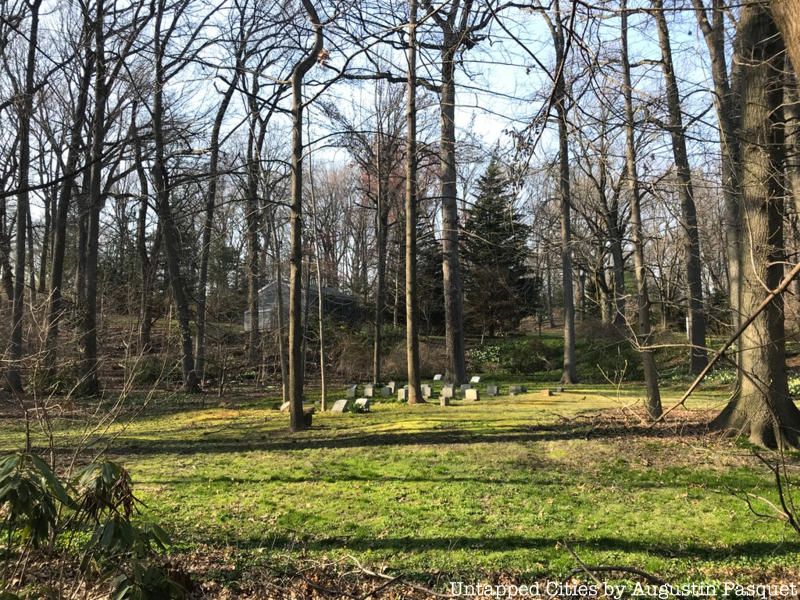
Though it has about 2000 gravestones, many probably don’t know about this hidden Quaker cemetery in Prospect Park. This property, the only private one in the park, is a cemetery owned by the Religious Society of Friends (the Quakers). The Quakers bought the property, which was then just undeveloped farmland, in 1849 but burials at this cemetery date as far back as the 1820s. Although Prospect Park opened in 1867, the gravestones remained and the site is still active.
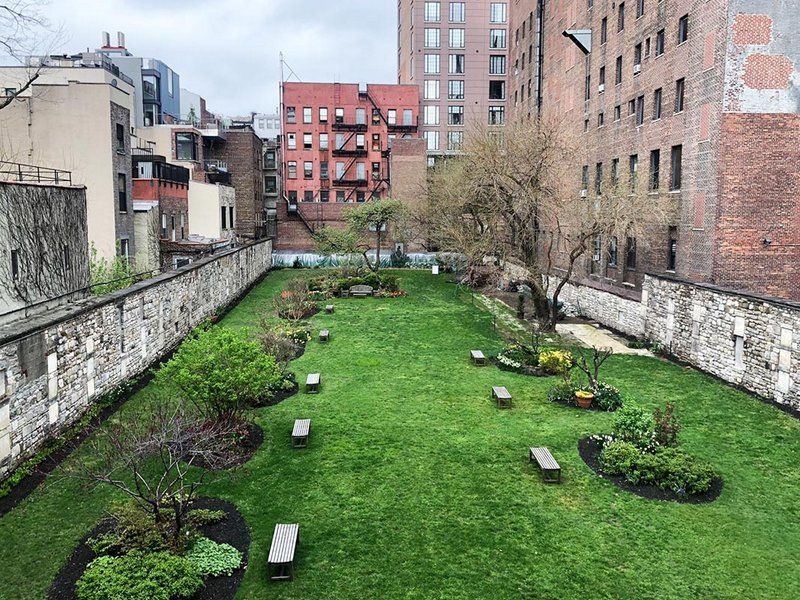 Courtesy of the New York Marble Cemetery
Courtesy of the New York Marble Cemetery
The New York Marble Cemetery (not be confused with the New York City Marble Cemetery, below) located in the East Village, is the oldest public non-sectarian cemetery in New York City. It was founded in 1830 during a time when yellow fever outbreaks made New York City residents hesitant to bury their dead in coffins at shallow depths below ground and a policy had prohibited earthen burials. Thus, all of these burials are in 156 underground family vaults made of white marble. The majority of these 2,080 interments occurred between 1830 and 1870, and its last one took place in 1937.
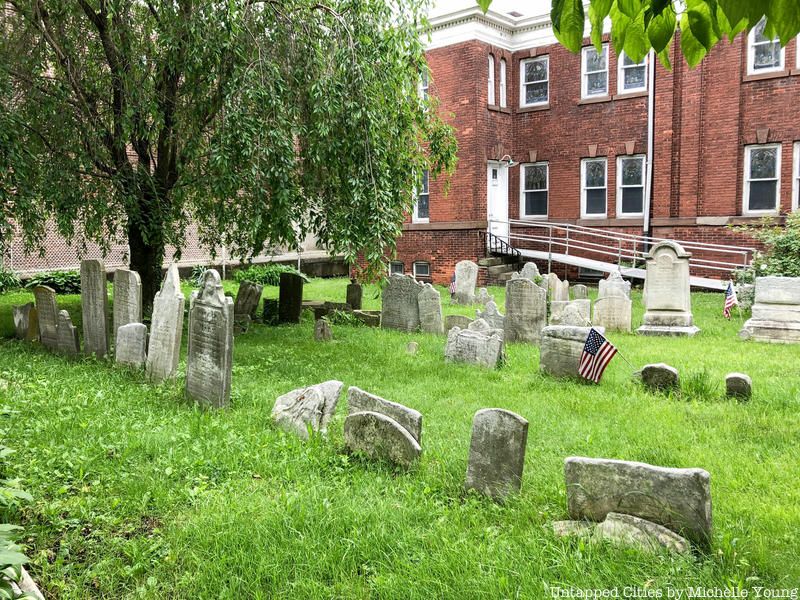
This cemetery of the Reformed Church on Staten Island is the oldest in the borough and has over 690 markers. Originally, the Dutch used it as burial grounds, but the church started to use it by 1714.
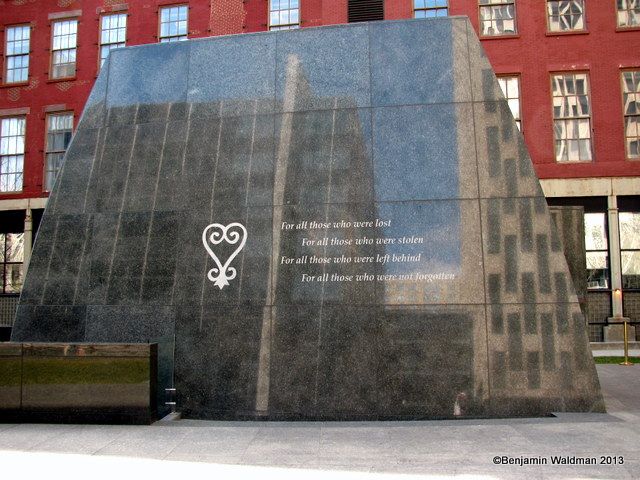
The African Burial Ground in Lower Manhattan isn’t as “hidden” as most of the other cemeteries on this list, but is still on the small side since it only has about 420 gravestones. The land contains the bodies of both free and enslaved Africans that were buried there from the 1690s until about 1794. These grounds were lost for years, but unearthed in 1991 during construction over the site.
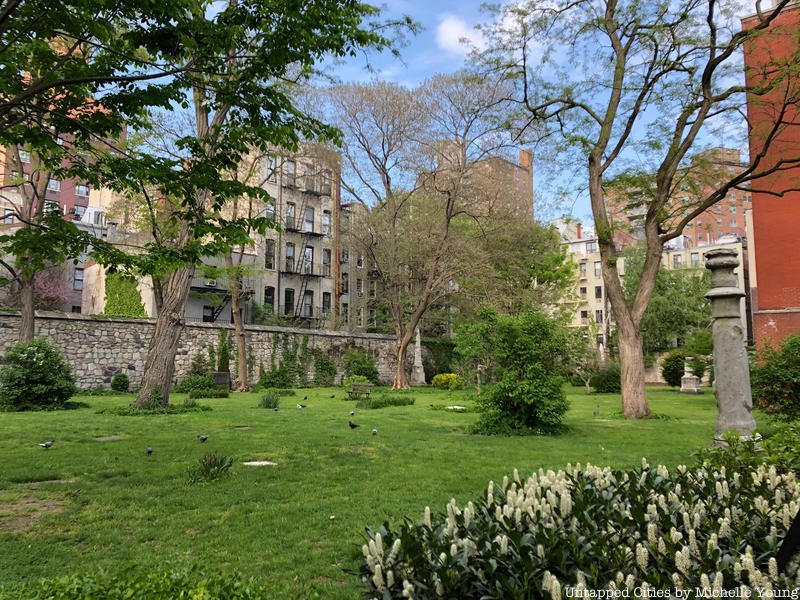
The New York City Marble Cemetery (which is entirely different from the New York Marble Cemetery, though the two are near each other) is in the East Village and contains more than 250 family vaults which can hold up to thirty internments. It was founded in 1831 as New York City’s second non-sectarian burial place, also for reasons related to the yellow fever outbreak occurring at the time.
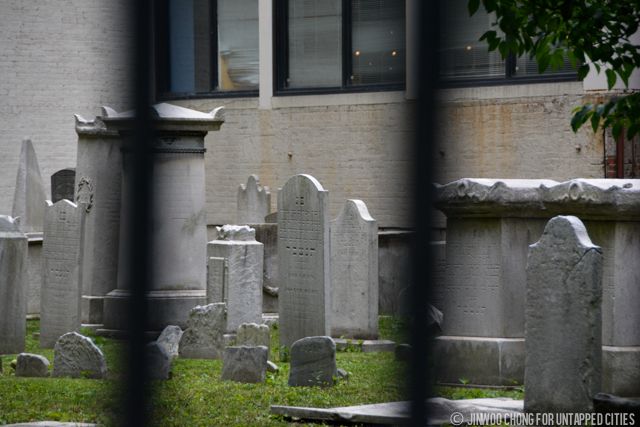
Since it’s nestled between some tall buildings on West 21st street, it’s easy to walk right past the Third Cemetery of the Spanish-Portuguese Synagogue, where 250 people are buried. The land for this cemetery was purchased in 1829 and operated until 1851, when a law prohibiting the burial of people south of 86th street in Manhattan took effect.
This cemetery is from the oldest Jewish congregation in North America called the Congregation Shearith Israel, which had to move four times since its its 1654 founding. Thus, there are two other, even smaller, cemeteries that were part of this organization, which we’ll mention a little later on this list.
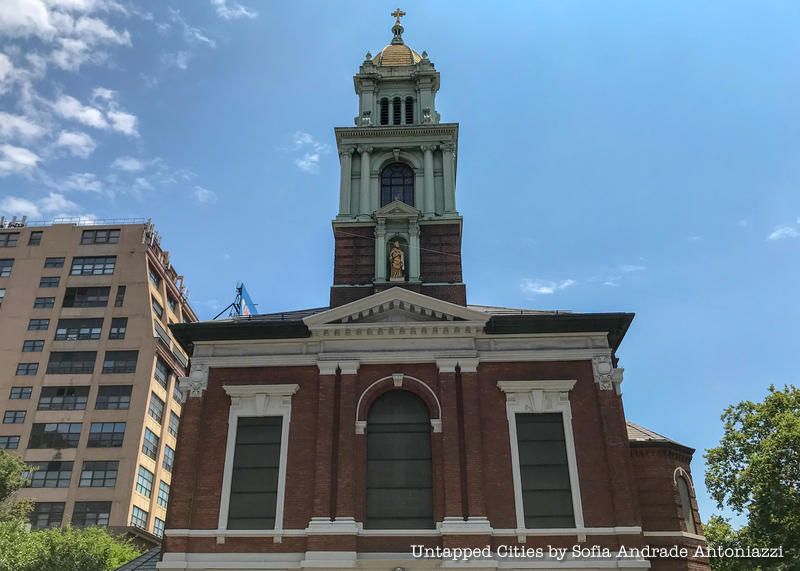
This burial ground surrounding the Cathedral Basilica of St. James in downtown Brooklyn was founded in 1822. The church was built first (as the first Catholic church in Brooklyn), and the cemetery was later established around it for clergy and laity. When the original land became too full, more land was obtained. Between 1839 and 1849, about 7,000 people were buried here.
However, this number sharply decreased and by 1900, there were only 200 tombstones, and by 1914, there were only 100. According to the New York Cemetery Project, “Many graves reportedly are beneath the rear of the church, covered over when the church was rebuilt and enlarged in 1902.”
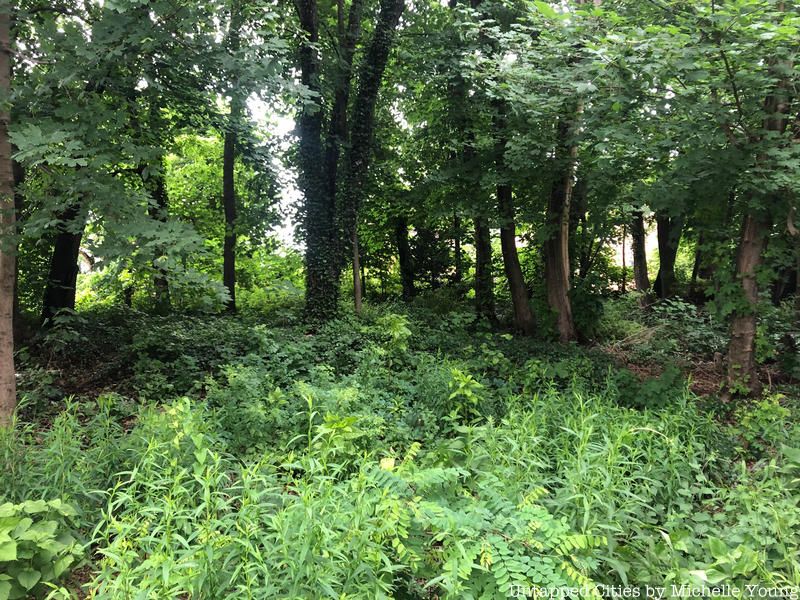
This colonial-era Dutch burial ground in an overgrown lot in Fresh Meadows could have up to 200 people buried here. It was named for the Brinckerhoff family, who arrived in New Netherland in the 1630s. The cemetery was in use by 1730 based on its early gravestone dates. There are at least 76 plots from between 1736 and 1872, including several Brinckerhoff descendants. It stopped actively functioning in the late nineteenth century.

With just 1,750 people buried here, St. Mark’s Church-in-the-Bowery is the oldest site of continuous worship that is still active in New York City, and the second oldest church. Most significantly, Peter Stuyvesant rests here. Though this cemetery lacks conventional tombstones, there are decrepit stone slabs marking underground vaults where wealthy New Yorkers lay.
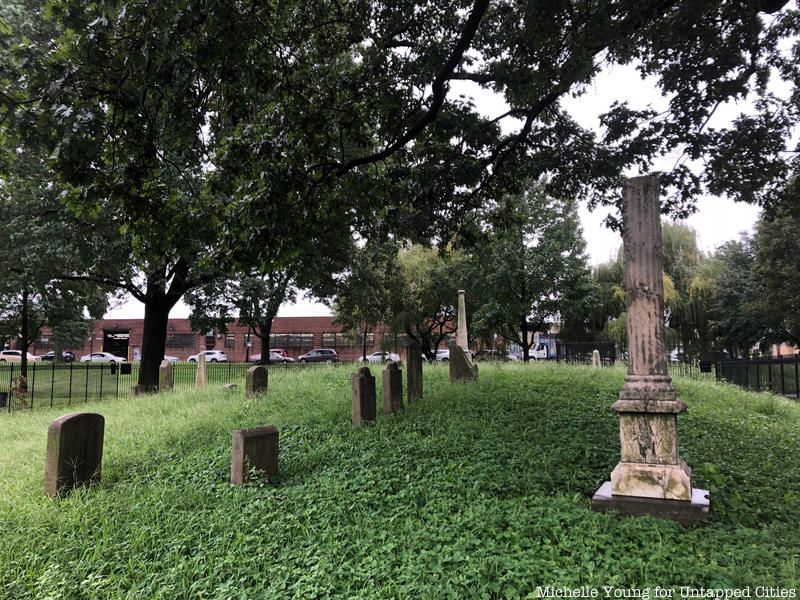
This tiny cemetery in the Bronx is where the Hunt and Leggett families rest. It’s named after the famous nineteenth century poet, Joseph Rodman Drake and sits on the property of the Hunt family. With just 50 markers here, including Drake’s and those of families associated with the development of the Bronx, this tiny cemetery is one of the smallest on this list.
On a mound south of this cemetery was a Slave Burial Ground, where several enslaved Africans were buried under basic gravestones. The last burial here occurred on the Slave Burial Ground took place in the 1840s, and was then hidden by construction until a history project at P.S. 48 unearthed it.
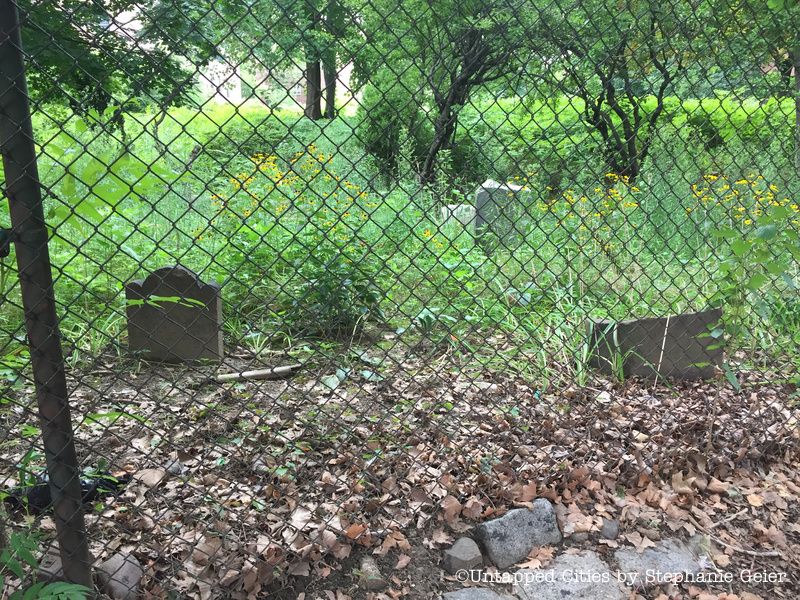
The Moore-Jackson Cemetery in Woodside, Queens has just 42 graves and is one of the few colonial cemeteries in New York City. Its earliest known burial was in 1733, while its last one was in 1867. The cemetery is located on the farmland of Samuel Moore, the son of the first minister of Newtown, and was owned during the Revolutionary War by his son, a Loyalist.
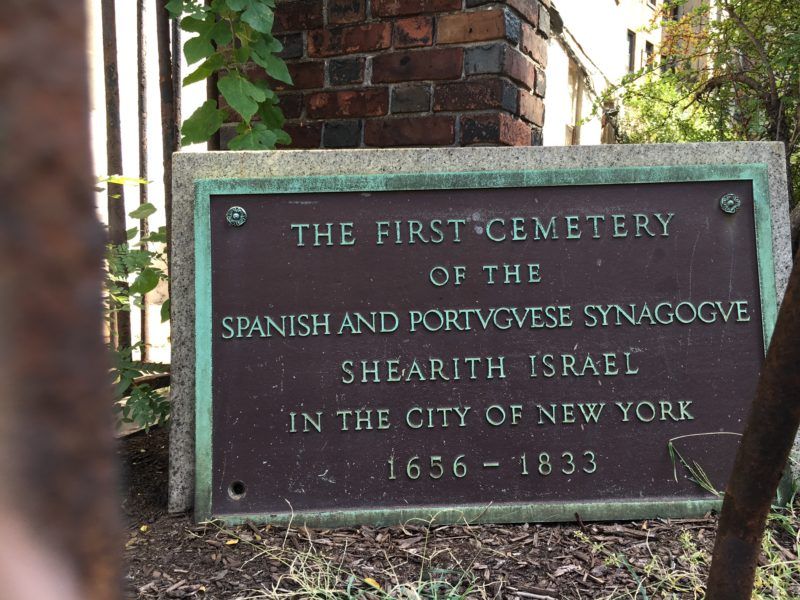
A plaque sitting at the entrance of the first Shearith Israel Cemetery on St. Jame’s Place in Lower Manhattan. Photo by Justin Rivers.
In 1682, the the congregation Shearith Israel synagogue purchased land at Chatham Square near Chinatown. Thus, this cemetery, also called the Chatham Square Cemetery, dates back to 1683 and was the first of the three cemeteries from the congregation Shearith Israel that we mentioned early in this list. It is the oldest Jewish cemetery in North America and contains the bodies of 22 Revolutionary War veterans and the first American-born rabbi. It stopped operating in 1828.
Over the years, segments of the graveyard were taken by various nearby developments. For example, in 1855, 256 graves were moved when the Bowery expanded.
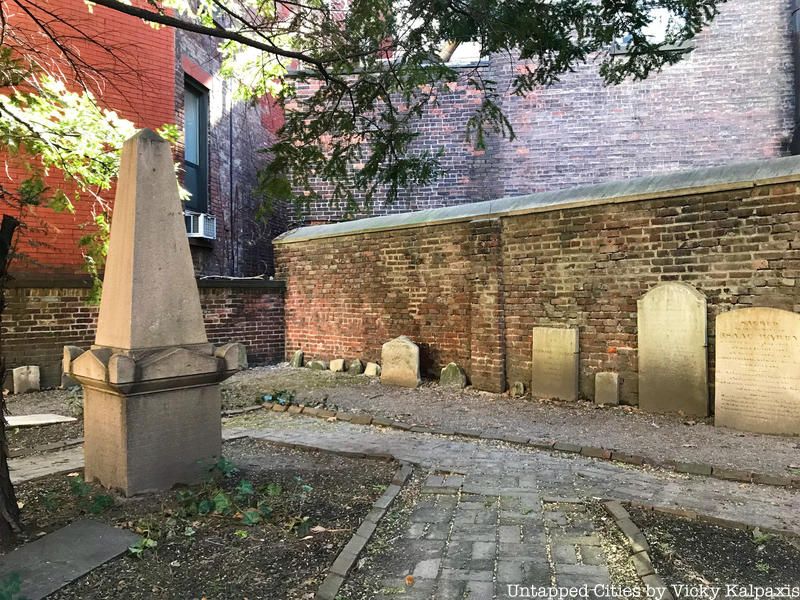
Also called the “New Bowery Cemetery,” this cemetery, established in 1805, used to be much bigger. However, in 1830 West 11th street was extended reducing the cemetery’s size so that it is now just a small triangle that holds about 30 graves. The displaced plots were moved to the Third Cemetery of Congregation Shearith Israel (number 12 on this list). Twenty gravestones from the original second cemetery still stand.
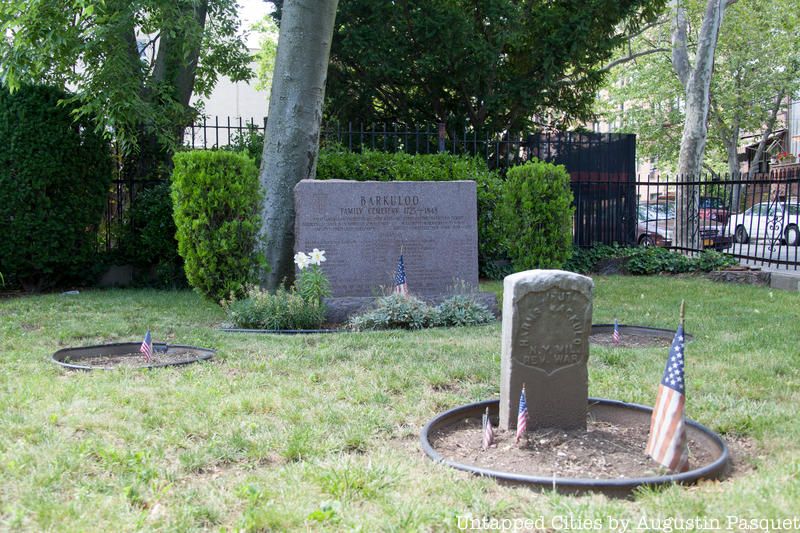
With only two interments left, the Revolutionary War Cemetery (also called the Barkaloo Cemetery) in Bay Ridge, is the smallest cemetery in Brooklyn. The plot of land was purchased in 1725 by Dutch immigrant William Harmans Barkaloo as a family cemetery and is the only family cemetery independent from any larger ones in the borough. The last burial took place in 1848.
To read more about New York City’s cemeteries, check out Surprise! What NYC’s Former Cemeteries Are Now and Daily What?! The Monk Parrots of Green-Wood Cemetery in Brooklyn. Get in touch with the author @sgeier97.
Subscribe to our newsletter